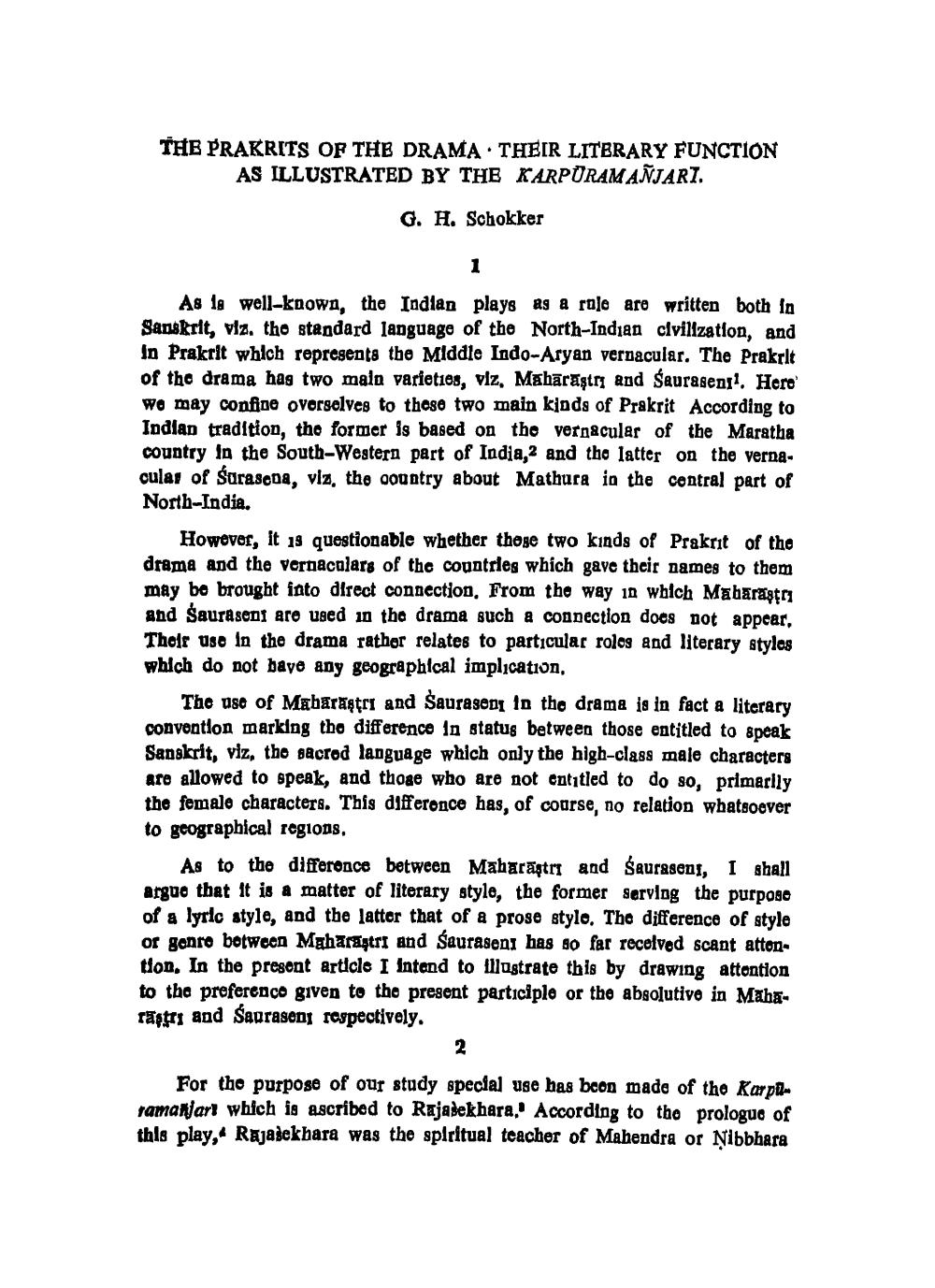________________
THE PRAKRITS OF THE DRAMA THEIR LITERARY FUNCTION AS ILLUSTRATED BY THE KARPURAMANJARI.
G. H. Schokker
1
As is well-known, the Indian plays as a raje are written both in Sanskrit, viz. the standard language of the North-Indian civilization, and in Prakrit which represents the Middle Indo-Aryan vernacular. The Prakrit of the drama has two main varieties, viz, Maharastry and Saurasent1. Here' we may confine overselves to these two main kinds of Prakrit According to Indian tradition, the former is based on the vernacular of the Maratha country in the South-Western part of India,2 and the latter on the vernacular of Surasena, viz, the country about Mathura in the central part of
North-India,
However, it is questionable whether these two kinds of Prakrit of the drama and the vernaculars of the countries which gave their names to them may be brought into direct connection. From the way in which Maharastr and Saurasent are used in the drama such a connection does not appear, Their use in the drama rather relates to particular roles and literary styles which do not have any geographical implication,
The use of Maharastri and Saurasens in the drama is in fact a literary convention marking the difference in status between those entitled to speak Sanskrit, viz, the sacred language which only the high-class male characters are allowed to speak, and those who are not entitled to do so, primarily the female characters. This difference has, of course, no relation whatsoever to geographical regions.
As to the difference between Maharastr and Saurasons, I shall argue that it is a matter of literary style, the former serving the purpose of a lyric style, and the latter that of a prose style. The difference of style or genre between Maharastri and Saurasent has so far received scant attention. In the present article I intend to illustrate this by drawing attention to the preference given to the present participle or the absolutive in Maharäştri and Saurasens respectively.
2
For the purpose of our study special use has been made of the Karpramanlart which is ascribed to Rajasekhara. According to the prologue of this play, Rajalekhara was the spiritual teacher of Mahendra or Nibbhara




